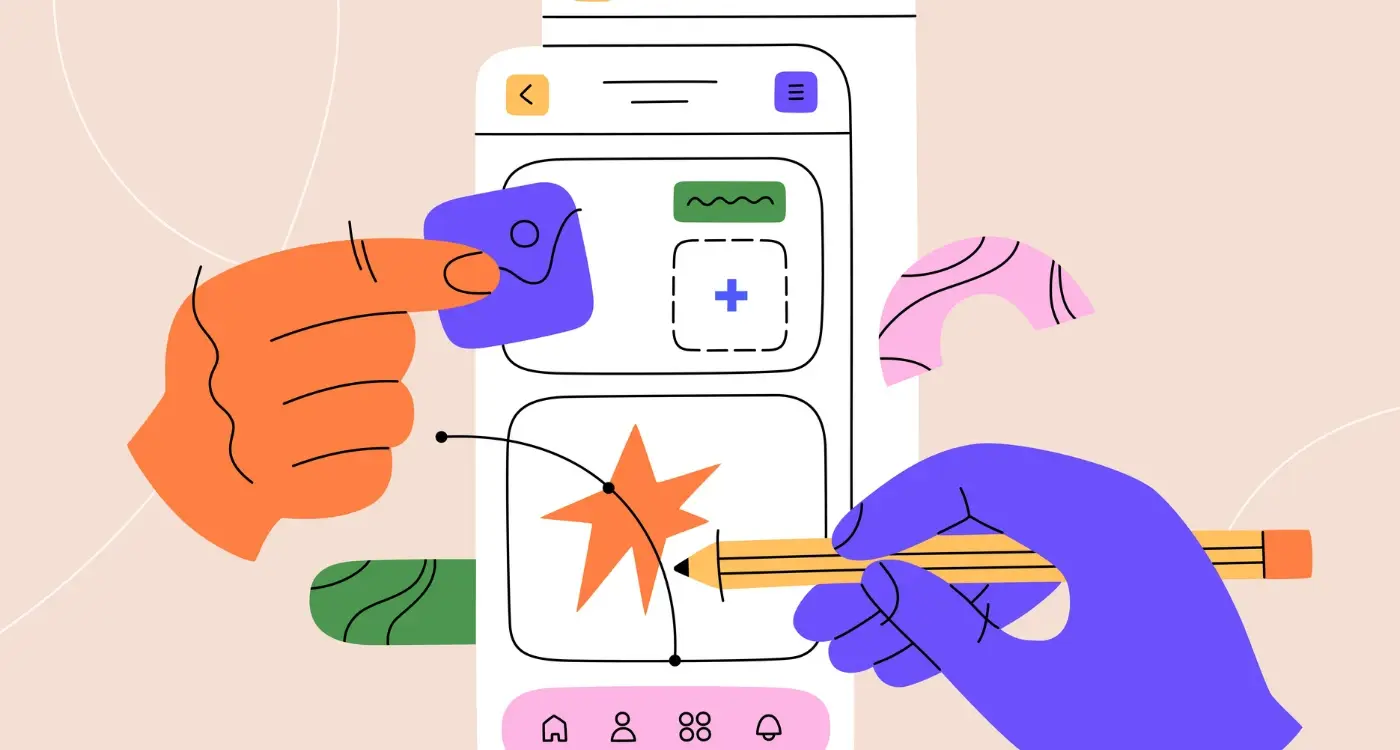How Do I Know If My MVP Is Good Enough to Launch?
Most product launches fail—not because the idea was wrong, but because the timing was off. Building a minimum viable product sounds straightforward enough, but knowing when it's actually ready to face real users? That's where things get tricky. I've watched countless founders either rush out half-baked products or polish their MVPs into expensive, over-engineered solutions that never see the light of day.
The truth is, there's no magic formula for MVP validation. Every product is different, every market has its quirks, and every team faces unique challenges. But there are patterns—warning signs that tell you when you're ready and red flags that scream "not yet." After years of helping startups navigate this exact question, I've learned that the answer isn't about perfection; it's about confidence.
The goal of an MVP isn't to be perfect—it's to learn fast and learn cheap
This guide will walk you through the practical steps of determining launch readiness. We'll cover everything from technical checklists to market validation methods, helping you avoid the most common pitfalls that kill promising products before they even get started. By the end, you'll have a clear framework for making that crucial go-or-no-go decision.
What Is an MVP and Why Does It Matter
An MVP stands for Minimum Viable Product—and I know what you're thinking, that sounds like tech jargon designed to confuse people. But stick with me here because this concept could save you thousands of pounds and months of headaches.
Think of your MVP as the most basic version of your app that still does what it's supposed to do. It's not the flashy, feature-packed dream app you've got in your head. It's the stripped-down version that solves your users' main problem without all the bells and whistles.
The Core Components of Any MVP
- One primary function that works reliably
- Basic user interface that people can navigate
- Core user journey from start to finish
- Feedback mechanism to collect user responses
Here's why this matters: I've watched countless clients burn through their entire budget building the "perfect" app, only to discover users didn't want half the features they'd spent months creating. Your MVP lets you test your core idea with real people before you commit to expensive development.
The beauty of an MVP is that it gives you permission to launch something imperfect. You're not trying to compete with Instagram on day one—you're trying to prove that people actually want what you're building. Once you've got that proof, then you can start adding features that users are actually asking for.
Signs Your MVP Is Ready for Real Users
After years of working with startups and established companies, I've seen plenty of MVPs that were rushed out too early—and others that sat gathering dust when they should have been shipped months ago. The tricky part isn't building the MVP; it's knowing when it's actually ready for real people to use.
Your MVP is ready when it solves the core problem you set out to tackle. Not perfectly, mind you, but well enough that someone would choose your solution over doing nothing at all. If users can complete the main task without getting stuck or confused, you're on the right track.
Core Functionality Works Without Breaking
The basic features need to work reliably. I'm not talking about having every bell and whistle—just the main thing your app does. If it's a food delivery app, people need to be able to order food and actually receive it. If it crashes during checkout or orders disappear, you're not ready yet.
People Actually Want to Use It
This sounds obvious, but you'd be surprised how many MVPs I've seen that technically work but solve problems nobody really has. When you show your MVP to potential users, they should get excited about using it—not just politely nod and say "that's nice."
Run a simple test: ask five potential users to complete your app's main task without any help from you. If most of them can do it successfully, you're probably ready for a wider launch.
Testing Your MVP With the Right People
Getting feedback on your MVP is brilliant—but only if you're asking the right people. I've watched countless founders show their app to anyone who'll listen, from their mum to the barista at their local coffee shop. The problem? Most of these people aren't your actual users and their feedback, whilst well-meaning, can send you down the wrong path entirely.
Your real target users are the ones who actually have the problem you're solving. They're the people who would genuinely pay for your solution or use it regularly. Not your friends being polite, not random strangers, but people who fit your user persona and have skin in the game.
Finding Your Test Users
Start with people who already struggle with the problem your app addresses. You can find them in online communities, forums, or social media groups where they discuss their pain points. Professional networks work well for B2B apps, whilst consumer apps benefit from broader social platforms.
- Look for active participants in relevant online communities
- Reach out to people who've complained about existing solutions
- Use your personal network to find genuine prospects, not just supporters
- Consider offering small incentives for quality feedback
The key is quality over quantity. Five users who genuinely need your solution will give you more valuable insights than fifty people who are just being nice. Their honest reactions—both positive and negative—will tell you whether your MVP is ready for launch.
Common Mistakes That Kill MVP Launches
I've watched countless MVP launches over the years, and there's a pattern to the ones that crash and burn. The biggest killer? Launching too early without proper MVP validation. People get excited—understandably so—and rush their minimum viable product out the door before it's actually ready for real users.
One mistake I see time and again is skipping basic product testing. Founders think they know what users want, but they haven't actually put their MVP in front of anyone outside their team. You can't validate your product in isolation; you need real feedback from real people who might actually use it.
The Feature Creep Trap
Another launch killer is feature creep. You start with a clean, simple MVP idea, then someone suggests "just one more feature" and before you know it, you're building a bloated product that does everything poorly instead of one thing well. This completely defeats the purpose of an MVP.
The best MVPs solve one problem really well, not ten problems badly
Market validation gets overlooked too. People assume there's demand for their product without actually checking if anyone wants to pay for it. Launch readiness isn't just about having a working product—it's about having a product that people actually need and will use.
Market Validation Methods That Actually Work
I've watched countless founders skip proper market validation and launch their MVPs into the void—only to discover nobody actually wants what they've built. It's heartbreaking, really. The good news? There are tried-and-tested methods to validate your idea before you spend months building something nobody needs.
Start With Real Conversations
Put down your laptop and start talking to real people. I mean proper face-to-face conversations, not surveys or online forms. Find twenty people who fit your target audience and ask them about their current problems. Don't pitch your solution straight away—just listen. You'll be amazed what you learn when you actually shut up and let people talk.
Test Demand Before You Build
Create a simple landing page that explains your app idea and include a "sign up for early access" button. Drive some traffic to it through social media or Google ads. If people aren't signing up, that's a red flag. You can also try the old-fashioned pre-order approach—if people won't pay for something that doesn't exist yet, they probably won't pay when it does.
- Run targeted Facebook or Instagram ads to gauge interest
- Create a waiting list and track sign-up rates
- Offer early bird pricing to test willingness to pay
- Use Google Ads to see if people search for your solution
The key is getting real data about real demand. Opinions from friends and family don't count—they'll tell you what you want to hear, not what you need to know. Remember, even if your app idea already exists, that's actually validation that there's a market for it.
Technical Readiness Checklist for Launch
Right, let's talk about the technical side of things—because nothing kills MVP validation faster than an app that crashes every five minutes! I've seen brilliant product ideas completely fail because the team rushed the technical preparation. Your users won't care how amazing your concept is if they can't actually use it.
The good news? You don't need perfection for an MVP launch. But you do need reliability. Think of it this way: your app needs to work well enough that people can complete the core tasks without wanting to delete it immediately.
Pre-Launch Technical Checklist
- Load testing completed with at least 50% more users than you expect
- All core user journeys tested on different devices and screen sizes
- Crash reporting tools installed and working
- Basic security measures in place (data encryption, secure API endpoints)
- App store guidelines reviewed and compliance checked
- Backup and recovery systems tested
- Performance monitoring tools configured
- Update mechanism working properly
Set up automated crash reporting before launch—not after. When users encounter bugs during your MVP validation phase, you need to know about them immediately so you can fix them fast.
Don't overthink this checklist. Your MVP doesn't need enterprise-level architecture, but it does need to handle your expected user load without falling over. Get these basics right, and you'll have a solid foundation for meaningful market validation. If you're working with limited budget app development, focus on the essential features first.
When to Hold Back and When to Go Forward
This is where things get tricky—and I mean properly tricky. You've got your MVP, you've done some testing, and now you're staring at a decision that could make or break your app's future. Do you launch or do you wait?
After building apps for countless clients over the years, I've learned that timing isn't just about having a working product. It's about having the right product at the right moment. Sometimes holding back for another week or two can save you months of recovery time later.
Clear Signs You Should Launch
Your core feature works reliably without crashes; users can complete their main task without getting stuck or confused; you've received positive feedback from at least 70% of your test users. These aren't just nice-to-haves—they're non-negotiables.
- No critical bugs that stop users from completing core tasks
- Positive user feedback on the main feature
- App loads quickly and doesn't crash during normal use
- You can handle the expected number of users
When to Pump the Brakes
If users are struggling to understand what your app does within the first 30 seconds, you're not ready. If your app crashes when more than 10 people use it at once, you're definitely not ready. Trust me—launching too early can damage your reputation before you've even built one. Understanding what can go wrong in an app development project can help you avoid these common pitfalls.
Conclusion
After eight years of working with startups and established brands, I've learnt that launching an MVP isn't about having a perfect product—it's about having the right product at the right time. Your MVP validation doesn't need to tick every box, but it must solve a real problem for real people. The businesses that succeed are those that listen to their users, adapt quickly, and aren't afraid to make changes based on feedback.
Market validation and product testing will tell you most of what you need to know about launch readiness. If users are actively engaging with your minimum viable product, coming back for more, and telling their friends about it, you're probably ready. The technical stuff can be fixed; user indifference cannot.
Launch readiness isn't a destination—it's a checkpoint. Your MVP is the start of a conversation with your market, not the end of your development journey. Some of the most successful apps I've worked on launched with features that seemed almost embarrassingly simple. But they solved one problem really well, and that was enough to get started.
Trust your research, trust your testing, and when in doubt, remember that a good MVP in users' hands is worth more than a perfect product that never sees the light of day.
Share this
Subscribe To Our Learning Centre
You May Also Like
These Related Guides

How Do You Validate User Personas Through Data Analysis?

How Do I Prove People Will Pay for My App Idea?



